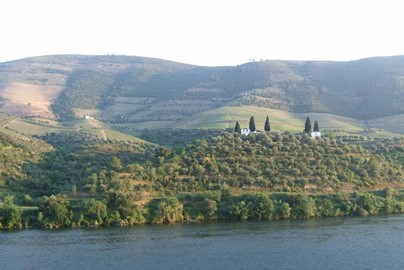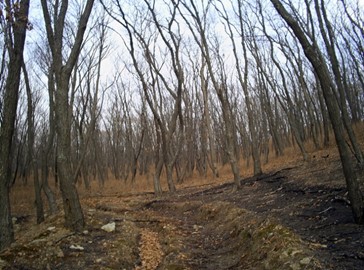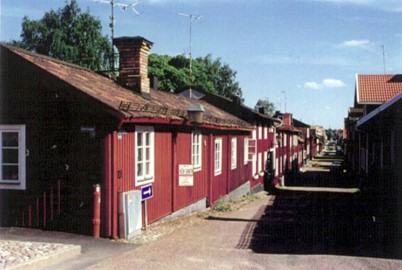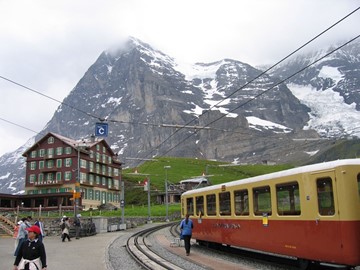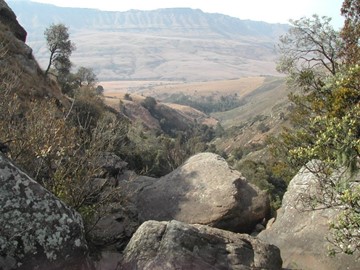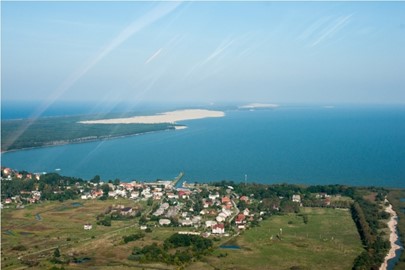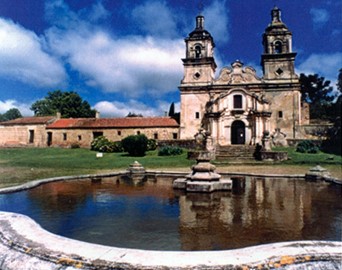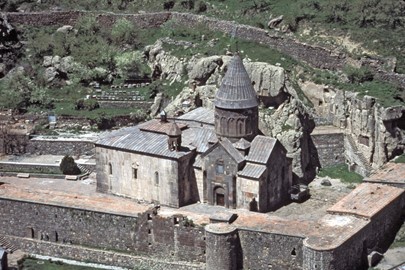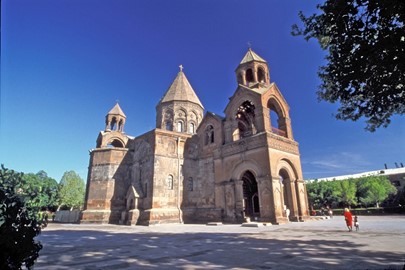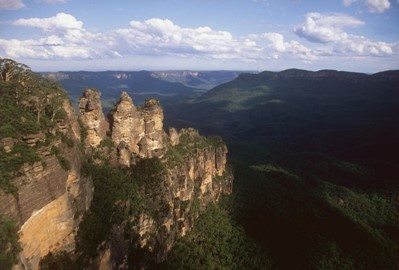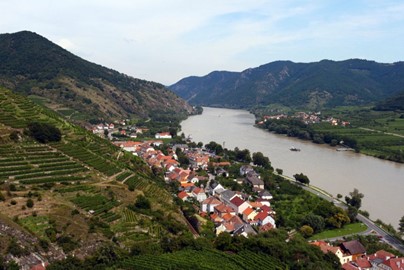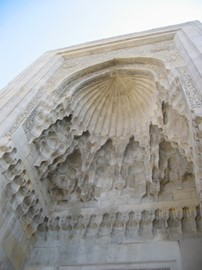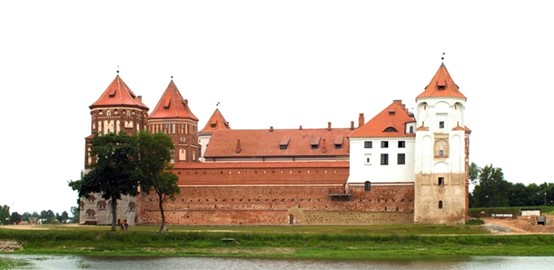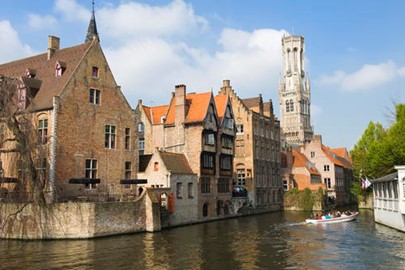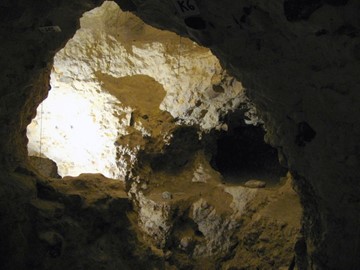search
Alto Douro
The Alto Douro Wine Region in Portugal, recognized as a UNESCO World Heritage site, is a historic wine-producing area renowned for its terraced vineyards along the Douro River. Established in 1756 as the world’s first demarcated wine region, it showcases a unique cultural landscape shaped by centuries of winemaking tradition. The area is celebrated for its production of Port wine, a fortified wine that has gained international acclaim, alongside table wines that reflect the region’s diverse grape varieties.... Read More
Central Sikhote Alin
Central Sikhote-Alin, a UNESCO World Heritage site in Russia, is a remarkable temperate forest region in the Far East, celebrated for its extraordinary biodiversity. This mountain range hosts a unique blend of northern taiga species, like reindeer and brown bears, alongside subtropical wildlife, including the endangered Amur tiger and Himalayan bear. Its pristine ecosystems, shaped by a mix of boreal and subtropical influences, support a vast array of rare and endemic flora and fauna. Recognized in 2001, it... Read More
Aranjuez
The Aranjuez Cultural Landscape, a UNESCO World Heritage site, is a remarkable example of a human-shaped environment blending nature and culture. It features an intricate network of historic gardens, orchards, and waterways, alongside elegant palaces and architectural treasures, reflecting centuries of royal influence and innovative land management. This harmonious fusion of Baroque and Renaissance styles with the surrounding natural beauty showcases a unique legacy of artistic and environmental planning. I... Read More
Falun Mining Area
This UNESCO World Heritage site in Sweden encompasses a historic copper mine that operated for over a millennium, from the 10th century until 1992, significantly shaping the region’s industrial and cultural landscape. At its peak in the 17th century, it supplied two-thirds of Europe’s copper, influencing global mining technology and funding Sweden’s military endeavors. The site includes the expansive Great Pit, a result of a 1687 collapse, alongside a well-preserved 17th-century planned town, miners’ cottag... Read More
Swiss Alps Jungfrau Aletsch
The Swiss Alps Jungfrau-Aletsch, a UNESCO World Heritage site, showcases a stunning landscape of towering peaks, expansive glaciers, and deep valleys, recognized for its exceptional natural beauty and geological significance. This protected region is home to the largest glacier in the Alps and a rich diversity of flora and fauna, thriving in one of Europe’s most pristine alpine environments. It serves as a vital testament to the Earth’s climatic and environmental evolution, drawing global attention for its ... Read More
Tombs of Buganda Kings
The Tombs of Buganda Kings, a UNESCO World Heritage Site in Uganda, serve as the burial ground for four kabakas (kings) of the Buganda Kingdom, highlighting their spiritual and political significance to the Ganda people. Constructed in 1882 as a palace before being transformed into a royal cemetery in 1884, the site features the Muzibu Azaala Mpanga, a remarkable circular structure with a thatched dome, showcasing traditional Buganda architecture using organic materials like wood and reeds. Recognized in 20... Read More
New Lanark
New Lanark, a UNESCO World Heritage Site in the UK, is a remarkably preserved 18th-century cotton mill village founded by David Dale and later managed by Robert Owen, a social reformer. Established in 1786, it became a pioneering model for industrial communities, showcasing innovative worker welfare practices, including fair wages, education, and healthcare. The site features historic mills, worker housing, and a school, set against a picturesque riverside backdrop, reflecting its significance in industrial... Read More
Saltaire
Saltaire is a UNESCO World Heritage Site in the UK, recognized for its well-preserved Victorian industrial village. Built in the 19th century by philanthropist Titus Salt, it features a model community with workers’ housing, a mill, and public buildings designed to improve living conditions during the Industrial Revolution. The site showcases Italianate architecture and urban planning, reflecting a blend of functionality and aesthetic appeal. Today, it stands as a testament to social reform and industrial h... Read More
Dorset and East Devon Coast
This UNESCO World Heritage site, often called the Jurassic Coast, stretches along 95 miles of stunning coastline in southern England. It’s renowned for its geological significance, showcasing 185 million years of Earth’s history through dramatic cliffs, fossil-rich beaches, and unique rock formations. The area attracts scientists, hikers, and nature enthusiasts eager to explore its ancient landscapes and uncover traces of prehistoric life. Its outstanding universal value lies in its contribution to understa... Read More
Derwent Valley Mills
Derwent Valley Mills, a UNESCO World Heritage Site, is a historic industrial landscape recognized for its pioneering role in the Industrial Revolution. This site showcases a series of 18th- and 19th-century cotton mills, powered by water, that marked the shift from manual to mechanized production. The well-preserved mills, workers' housing, and water management systems illustrate the technological and social innovations that shaped modern industry. It stands as a testament to the birth of the factory system... Read More
Samarkand
Samarkand, a UNESCO World Heritage site in Uzbekistan, is a historic city renowned for its stunning Islamic architecture and rich cultural legacy. Known as a crossroads of ancient trade routes, it features iconic landmarks like the Registan, a grand public square framed by intricately tiled madrasas, and the Bibi-Khanym Mosque, famed for its colossal dome. The city’s mausoleums, such as the Gur-e-Amir, showcase exquisite craftsmanship and house the tombs of notable figures, reflecting its significance as a ... Read More
High Coast and Kvarken Archipelago
High Coast / Kvarken Archipelago, a UNESCO World Heritage site in Finland and Sweden, recognized in 2000 and extended in 2006, is a Baltic coastal region showcasing dramatic post-glacial rebound, with land rising since the Ice Age. The High Coast’s rugged cliffs contrast with Kvarken’s shallow archipelago of moraine islands, hosting unique ecosystems and geological formations. This transnational site reflects Scandinavia’s natural heritage, offering a vivid record of Earth’s geological evolution and adaptat... Read More
Maloti Drakensberg
Maloti-Drakensberg, a UNESCO World Heritage site in Lesotho and South Africa, recognized in 2000 and extended in 2013, is a stunning mountain range blending dramatic peaks with rich cultural heritage. Its basalt cliffs and sandstone formations shelter thousands of San rock art sites, dating back over 4,000 years, alongside diverse flora and fauna like the bearded vulture. This transnational site reflects Southern Africa’s natural and artistic legacy, preserving a unique fusion of geology and human history.
Curonian Spit
The Curonian Spit, a UNESCO World Heritage site in Lithuania and Russia, recognized in 2000, is a narrow, 98-kilometer sand dune peninsula separating the Curonian Lagoon from the Baltic Sea. Shaped by wind and human efforts since the 19th century, its shifting dunes, forests, and fishing villages reflect a fragile balance of nature and culture. This transnational site showcases the region’s unique ecological and historical heritage, preserving a dynamic coastal landscape across borders.
Ischigualasto and Talampaya
Ischigualasto and Talampaya, a UNESCO World Heritage site in Argentina, recognized in 2000, are contiguous desert parks preserving a 250-million-year geological record from the Triassic period. Featuring striking red rock formations, fossil beds with early dinosaur remains, and petrified forests, they reflect Earth’s ancient past in a stark, arid landscape. This site showcases Argentina’s scientific heritage, offering a rare window into prehistoric life and geological evolution.
Jesuit Block and Estancias of Córdoba
Jesuit Block and Estancias of Córdoba, a UNESCO World Heritage site in Argentina, recognized in 2000, is a 17th- and 18th-century complex in Córdoba featuring a Jesuit college, church, and five rural estates. Built to fund missionary work, its baroque architecture and productive lands reflect a unique blend of European and Indigenous influences. This site showcases Argentina’s colonial heritage, preserving a testament to Jesuit education and economic ingenuity in the Americas.
Geghard Monastery
Geghard Monastery, a UNESCO World Heritage site in Armenia, recognized in 2000, is a 4th- to 13th-century complex partially carved into cliffs, blending rock-hewn churches with ornate stonework. Renowned for its acoustics and sacred relics, like the spear said to have pierced Christ, it reflects medieval Armenian spirituality and craftsmanship. This site showcases Armenia’s cultural heritage, preserving a unique fusion of nature and architecture in a dramatic setting.
Echmiatsin and Zvartnots
Echmiatsin and Zvartnots, a UNESCO World Heritage site in Armenia, recognized in 2000, encompass the 4th-century Mother Cathedral of Echmiatsin, the world’s oldest cathedral, and the 7th-century Zvartnots ruins, a pioneering circular temple. Reflecting Armenia’s early adoption of Christianity, these sites feature intricate stonework and architectural innovation. This site showcases Armenia’s religious and cultural heritage, preserving a foundational legacy of Christian history and design.
Greater Blue Mountains Area
The Greater Blue Mountains, a UNESCO World Heritage site in Australia, is a rugged wilderness renowned for its dramatic sandstone cliffs, deep valleys, and rich biodiversity. Its ancient eucalypt forests, emitting a blue haze from oil vapors, harbor unique species like the Wollemi pine, a living fossil. Sculpted by millions of years of erosion, the landscape features cascading waterfalls and expansive plateaus. This ecological haven offers a striking blend of natural beauty and evolutionary significance, se... Read More
Wachau
The Wachau Cultural Landscape, a UNESCO World Heritage site in Austria, is a scenic river valley renowned for its historic charm and natural beauty. Lined with terraced vineyards, medieval villages, and ancient castles, it stretches along a winding river framed by rolling hills. Monasteries and ruins dot the landscape, reflecting centuries of cultural evolution tied to winemaking and trade. This picturesque region seamlessly blends human heritage with stunning scenery, making it a timeless gem of Austria’s ... Read More
Baku
Baku, a UNESCO World Heritage site in Azerbaijan, is a historic walled city celebrated for its medieval architecture and cultural richness. Enclosed by ancient stone walls, it features the striking Maiden Tower, a symbol of mystery, and the ornate Shirvanshah’s Palace, a masterpiece of 15th-century design. Blending Persian, Ottoman, and Islamic influences, its narrow streets and ancient structures reflect a vibrant historical tapestry. This well-preserved fortress stands as a testament to Azerbaijan’s archi... Read More
Mir Castle
Mir Castle, a UNESCO World Heritage site in Belarus, is a striking 16th-century fortress renowned for its architectural grandeur and historical significance. Combining Gothic, Renaissance, and Baroque styles, its robust red-brick walls, towers, and courtyards reflect the power of the noble families who built it. Once a defensive stronghold and aristocratic residence, it stands amid serene landscapes as a symbol of resilience. This well-preserved castle offers a vivid glimpse into Belarus’ medieval past and ... Read More
Brugge
The Historic Centre of Brugge, a UNESCO World Heritage site in Belgium, is a remarkably preserved medieval cityscape celebrated for its cultural and architectural value. Dating back to the Middle Ages, its cobblestone streets, canals, and Gothic buildings—including churches and merchant houses—reflect its past as a thriving trade hub. Inscribed by UNESCO in 2000, it offers a window into Europe’s medieval urban life, with landmarks like the Belfry standing as enduring symbols of its heritage. Today, it remai... Read More
Major Town Houses, Brussels
The Major Town Houses of Victor Horta, a UNESCO World Heritage site in Belgium, are iconic examples of Art Nouveau architecture from the late 19th and early 20th centuries. Designed by architect Victor Horta, these four residences showcase innovative use of iron, glass, and open floor plans, blending functionality with elegant, nature-inspired designs. Recognized by UNESCO in 2000, they mark a pivotal moment in architectural history, influencing modern design worldwide. These houses remain celebrated for th... Read More
Neolithic Flint Mines
The Neolithic Flint Mines at Spiennes, a UNESCO World Heritage site in Belgium, are among the oldest and largest flint extraction sites in Europe, dating back to 4,400–2,200 BCE. These prehistoric mines, featuring deep shafts and galleries, demonstrate early human ingenuity in tool-making and resource extraction. Recognized by UNESCO in 2000, they provide valuable archaeological insight into Neolithic technology and society. The site’s well-preserved underground network highlights its significance as a test... Read More
